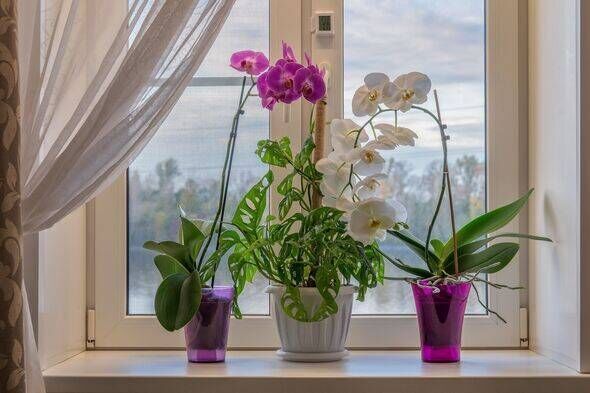Lifestyle
Adjust Your Heating for Healthier Houseplants This Winter

As the autumn months usher in cooler temperatures, many homeowners are preparing for their heating systems to kick in. This seasonal adjustment brings challenges not only for human occupants but also for indoor plants, which can suffer as conditions change. Plant enthusiasts often notice their greenery declining around mid-October, with once-thriving species like ferns and monsteras wilting as the heating season begins.
Plant expert Ollie Burgess emphasizes that many indoor plants react negatively to rapid environmental changes, stating, “People often blame themselves for being a ‘bad plant parent’, but the truth is most plants are reacting to sudden environmental changes in your home. Houseplants don’t like surprises.” As the indoor heating system activates, air quality can deteriorate, leading to dry conditions that stress these delicate life forms.
Adam Knight, Lead Engineer at home heating and cooling company BOXT, adds, “It’s not just the heat itself; how it moves around your home and how dry it becomes can create hot and cold spots.” This fluctuation can lead to issues such as browning leaves and curling, particularly in plants that thrive in humid environments.
Understanding Plant Needs in Heated Homes
When central heating is turned on, three key changes occur: humidity levels drop, temperatures fluctuate, and drafts may appear. Warm air holds more moisture than cold air. As a result, heating without adding humidity can reduce indoor moisture levels significantly. Many houseplants, especially tropical varieties like ferns and monsteras, require humidity levels above 40% to flourish. During winter, indoor humidity can plummet to below 30%.
“Browning tips are often the first sign that your plants are struggling with dry air. Low humidity can also cause leaves to curl or even wilt,” explains Burgess. He points out that plants placed near windows may experience drafts at night, while warm air during the day can create further stress.
“The health of your plants acts as a barometer for your home’s air quality. If your monstera is browning or your fern is curling, that’s a red flag that the air is too dry for you as well,” Burgess adds.
Strategies for Healthy Houseplants
Proper placement of houseplants is crucial during the heating season. Radiators, underfloor heating vents, or sunny windowsills located just above heaters can harm fragile foliage. A simple rule of thumb is: if you can feel warmth on your palm when you hold it near the plant, it is too close to the heat source. Ideally, plants should be spaced approximately 50 cm to 1 m away from radiators.
Grouping plants together can also help them create a mini-environment. For added humidity, consider placing a dish of water and stones beneath the plant pot. As the water evaporates, it will increase the moisture in the surrounding air.
Consistency is paramount when it comes to indoor heating. Burgess warns against running heating systems on high, fluctuating schedules. “Even swings from 16°C at night to 25°C during the day are enough to stress plants, causing browning leaves, curling, and drooping,” he says.
Knight echoes this sentiment, recommending stable heating. “Sudden on/off heating cycles can cause rooms to fluctuate between hot and cold, which isn’t ideal. A smart thermostat can help maintain a steady environment while reducing energy use.” For optimal results, aim to keep temperature changes within approximately 3-4°C, ensuring a cozy atmosphere without inflating heating bills.
While central heating removes moisture from the air, closed windows and doors can trap humidity from cooking, bathing, and even breathing. According to Knight, maintaining humidity levels between 50% to 55% in summer and 45% to 50% during winter is beneficial. He suggests daily ventilation and using a budget-friendly hygrometer to monitor levels, available online for as low as £3.
Overwatering is another concern for plant owners, especially in cooler, low-light conditions. Limp, drooping leaves often indicate excessive moisture, while yellowing leaves may suggest inconsistent watering or insufficient light. “In winter, soil dries more slowly, so always check moisture with your finger before adding water,” Burgess advises.
For those looking to maintain indoor greenery with minimal effort, hardy, air-purifying plants like the Snake Plant and ZZ Plant are excellent choices. These plants can withstand dry, heated air and require little maintenance. Other suitable options include Pothos and Philodendron, both recognized for their air-cleaning abilities.
Kitchens and bathrooms, which naturally retain more humidity, are ideal for moisture-loving plants like ferns. Living rooms with less draft are suitable for tougher varieties like succulents and snake plants. In areas with variable light conditions, consider versatile options such as jade plants or aloe vera.
Beyond aesthetics, houseplants can create a healthier living environment. Studies show that they improve indoor humidity through transpiration, alleviating dry skin and irritated eyes which can result from dry air.
Burgess concludes, “Think of your plants as housemates. They need stable conditions to be happy – just like we do. Get the balance right, and they’ll not only survive winter but thrive in it.” With a stable home environment, smart heating, and careful placement, maintaining healthy plants during the colder months can be a straightforward task. When plants show signs of stress, it may indicate that adjustments to the heating system are necessary for both their health and that of the inhabitants.
-

 Health4 days ago
Health4 days agoRare Brain Condition Discovered More Common in New Mexico
-

 Politics6 days ago
Politics6 days agoPrince Andrew Steps Back from Royal Duties Following Epstein Memoir
-

 Health5 days ago
Health5 days agoRemembering Mary Ingleby: A Life of Love, Teaching, and Music
-

 Sports6 days ago
Sports6 days agoMLS Decision Day 2025: Playoff Spots on the Line as Teams Clash
-

 World5 days ago
World5 days agoYoung Driver Dies in Collision with Box Truck in El Cajon
-

 Science6 days ago
Science6 days agoIdaho State University Launches Haunted Science Laboratory on Oct. 25
-

 Lifestyle6 days ago
Lifestyle6 days agoKent Hamilton Named Southeastern Farmer of the Year at Expo
-

 Business5 days ago
Business5 days agoFirst National Bank of Groton’s Quiet Period Ends October 21
-

 Entertainment6 days ago
Entertainment6 days agoTrump Commutes George Santos’ Sentence, Sparks Controversy
-

 Politics6 days ago
Politics6 days agoNavy Veteran Max Quattromani Launches Campaign for Assessor Seat
-

 Sports6 days ago
Sports6 days agoSaquon Barkley Reacts to James Franklin’s Dismissal from Penn State
-

 World6 days ago
World6 days agoHamas to Return Additional Hostage Remains on Friday









